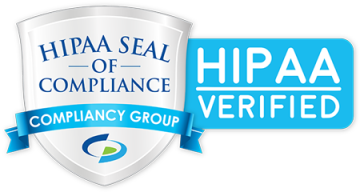
UFE
Uterine Fibroid Embolization is a Non-Surgical procedure that shrinks fibroids by blocking the blood flow.
Myomectomy
Myomectomy is a surgical procedure that removes probelm fibroids while leaving the uterus.
Hysterectomy
Surgical procedure that removes the uterus completely or partially, removing the fibroids with it.
Uterine Ablation
Surgical procedure that burns fibroids through abdominal incisions without removal of fibroids.
Invasiveness
- Minimally Invasive
- Major Surgery
- Major surgery
- Major surgery
Single Skin Puncture
- Yes
- No
- Major surgery
- Major surgery
Stitches
- No
- Yes
- Major surgery
- Major surgery
Internal Cutting, Bleeding, Burning
- No
- Yes
- Major surgery
- Major surgery
Least Blood Loss
- Yes
- No*
- Major surgery
- Major surgery
General Anesthesia Required
- No
- Yes
- Major surgery
- Major surgery
Pregnancy Possible
- Yes13
- Yes14
- Major surgery
- Maybe1
Treat Fibroids in a Single Treatment
- Yes2
- No15
- Yes
- No3
Outpatient (No Hospitalization)
- Yes
- No*
- Major surgery
- Yes
Blood Transfusions Reported
- No
- Yes*
- Major surgery
- Yes
Risk & Complication Rate
- Low6
- High17
- High8
- Low9
Recovery Less Than 7 Days
- Yes17
- No18
- No17
- Yes12
Risk of Fibroid/Symptom Recurrence
- Low10
- Moderate11
- Yes
- Low12
Saves Your Uterus
- Yes
- Yes
- Major surgery
- Yes
Low Risk of Second Procedure
- Yes16
- No4
- Yes
- Low5
Improve Quality of Life
- Yes
- Yes
- Yes
- Yes
Comparison Chart
Notes:
1. Larger, more rigorous studies are needed to evaluate pregnancy outcome after treatment. Pregnancy has been reported after ablation however, 13% of patients also have reported spontaneous abortions.
2. Certain fibroid subtypes such as those that are avascular or cervical may not respond to treatment. MR imaging can demonstrate the vascularity of fibroids and allow determination of whether embolization is a reasonable treatment option.
3. Numerous fibroids cannot be treated, periphery of large fibroids can grow, fibroids in certain locations require a high level of skill to treat safeley with this method or may require additional procedure such as hysterescopic myomectomy
4. Up to 25% of patients may undergo another procedure after myomectomy
5. Larger follow up studies needed. Reinterventions for fibroid symptoms are reported by company as usually not necessary.
6. Major complication rate is 1.25%.
7. Major complications occur in 43% of patients and minor complications in 32% of patients.
8. Overall complication rates are 51% for total abdominal hysterectomy and 23% for vaginal hysterectomy.
9. Overall complication rate is 2.5% by experienced user.
10. Rate of symptom recurrence is 3% at 1 year post-UFE.
11. Cumulative risk of fibroid recurrence is 10% after one year.
12. 94% of patients feel the treatment was effective in eliminating their symptoms. Recovery time is typically 4-5 days.
13. Spontaneous pregnancy rates after UFE are 40% after two years. For 85.5% of these women, it was their first pregnancy. Other studies have found a subsequent fertility rate of 58% after UFE.
14. Approximately 35% of women conceive after uterine myomectomy.
15. Not every fibroid can be removed during a single myomectomy procedure, this depends on location and technique used. It is not uncommon for women to have multiple myomectomies. For example, only women with submucosal fibroids are eligible for a hysteroscopic myomectomy. Fibroids located within the uterine wall cannot be removed with this technique. Repeat myomectomy is sometimes necessary for recurrent fibroid symptoms and may be associated with postoperative complications and a fertility rate of around 56%.
16. Follow-up studies over several years have shown that it is rare for treated fibroids to regrow or for new fibroids to develop after uterine fibroid embolization. This is because all fibroids present in the uterus, even early-stage nodules that may be too small to see on imaging exams, are treated during the procedure. Uterine fibroid embolization is a more permanent solution than the option of hormonal therapy, because when hormonal treatment is stopped the fibroid tumors usually grow back.
17. Our UFE recovery is 2 days, patients return to work by day 7. UFE reported to have shorter hospital stays (1.71 days versus 5.85 days, P<.01) and faster recovery to physical activities (9.50 days versus 36.18 days, P<.01) than those who had hysterectomies.
18. 60% of patients need less than or equal to 8 weeks and 40% of patients need more than 8 weeks to return to work after laparoscopic uterine myomectomy.
*Depends on technique/operator
References:
1. Jay M. Berman, MD, Abraham Shashoua, MD, Christopher Olson, MD, Sara Brucker, MD, Case Series of Reproductive Outcomes after Laparoscopic
Radiofrequency Ablation of Symptomatic Myomas, The Journal of Minimally Invasive Gynecology, available online at https://acessaprocedure.com/wp-content/uploads/2019/12/Berman-2019-Observational-Study-of-Pregnancy-Post-Acessa-copy.pdf John A. Thiel, MD, and Bala Bhagavath, MD, “
2. Sandeep P. Deshmukh , Carin F. Gonsalves, Flavius F. Guglielmo, Donald G. Mitchell, Role of MR Imaging of Uterine Leiomyomas before and after Embolization, Radiographics available online at https://pubs.rsna.org/doi/10.1148/rg.326125517
3. Lee BB, Yu SP. Radiofrequency Ablation of Uterine Fibroids: a Review. Curr Obstet Gynecol Rep. 2016;5(4):318-324 available online at https://www.ncbi.nlm.nih.gov/pmc/articles/PMC5114324/
4. Lee BB, Yu SP. Radiofrequency Ablation of Uterine Fibroids: a Review. Curr Obstet Gynecol Rep. 2016;5(4):318-324 available online at https://pubmed.ncbi.nlm.nih.gov/17125423/
5. Braun KM, Sheridan M, Latif EZ, et al. Surgeons’ early experience with the Acessa™ procedure: gaining proficiency with new technology. Int J Womens Health. 2016;8:669-675. Published 2016 Nov 23. doi:10.2147/IJWH.S119265 available online at https://www.ncbi.nlm.nih.gov/pmc/articles/PMC5126001/
6. Raikhlin A, Baerlocher MO, Asch MR. Uterine fibroid embolization: CME update for family physicians. Can Fam Physician. 2007;53(2):250-256 available online at https://www.ncbi.nlm.nih.gov/pmc/articles/PMC1949124
7. Adesina KT, Owolabi BO, Raji HO, Olarinoye AO. Abdominal myomectomy: A retrospective review of determinants and outcomes of complications at the University of Ilorin Teaching Hospital, Ilorin, Nigeria. Malawi Med J. 2017;29(1):37-42 available online at https://www.ncbi.nlm.nih.gov/pmc/articles/PMC5442490
8. Al-Kadri HM, Al-Turki HA, Saleh AM. Short and long term complications of abdominal and vaginal hysterectomy for benign disease. Saudi Med J. 2002 Jul;23(7):806-10. PMID: 12174230 available online at https://pubmed.ncbi.nlm.nih.gov/12174230/
9. Braun KM, Sheridan M, Latif EZ, et al. Surgeons’ early experience with the Acessa™ procedure: gaining proficiency with new technology. Int J Womens Health. 2016;8:669-675. Published 2016 Nov 23 available online at https://www.ncbi.nlm.nih.gov/pmc/articles/PMC5126001/
10. Spies JB. Current evidence on uterine embolization for fibroids. Semin Intervent Radiol. 2013;30(4):340-346 available online at https://www.ncbi.nlm.nih.gov/pmc/articles/PMC3835459/
11. Nezhat FR, Roemisch M, Nezhat CH, Seidman DS, Nezhat CR. Recurrence rate after laparoscopic myomectomy. J Am Assoc Gynecol Laparosc. 1998 Aug;5(3):237-40. doi: 10.1016/s1074-3804(98)80025-x. PMID: 9668143 available online at https://pubmed.ncbi.nlm.nih.gov/9668143/
12. Acessa Health Corporate data, FAQ available online at https://acessaprocedure.com/faq/
13. Pisco JM, Duarte M, Bilhim T, Branco J, Cirurgião F, Forjaz M, Fernandes L, Pereira J, Costa N, Pisco JBM, Oliveira AG. Spontaneous Pregnancy with a Live Birth after Conventional and Partial Uterine Fibroid Embolization. Radiology. 2017 Oct;285(1):302-310 available online at https://pubmed.ncbi.nlm.nih.gov/28608747/
14. Begum N, Anwary SA, Alfazzaman M, Sultana P, Banu J, Deeba F, Mahzabin Z, Nahar KN. Pregnancy outcome following myomectomy. Mymensingh Med J. 2015 Jan;24(1):84-8. PMID: 25725672 available online at https://pubmed.ncbi.nlm.nih.gov/25725672
15. J. Frederick, M. Hardie, M. Reid, H. Fletcher, S. Wynter, C. Frederick, Operative morbidity and reproductive outcome in secondary myomectomy: a prospective cohort study, Human Reproduction, Volume 17, Issue 11, November 2002, Pages 2967–2971, available online at https://academic.oup.com/humrep/article/17/11/2967/635326
16. UCSF Health, Myomectomy, available online at https://www.ucsfhealth.org/treatments/myomectomy
16. Radiology info, uterine fibroid embolization. https://www.radiologyinfo.org/en/info.cfm?pg=ufe
17. Raikhlin A, Baerlocher MO, Asch MR. Uterine fibroid embolization: CME update for family physicians. Can Fam Physician. 2007;53(2):250-256 available online at https://www.ncbi.nlm.nih.gov/pmc/articles/PMC1949124
18. Huff KO, Aref-Adib M, Magama Z, Vlachodimitropoulou EK, Oliver R, Odejinmi F. Returning to work after laparoscopic myomectomy: a prospective observational study. Acta Obstet Gynecol Scand. 2018 Jan;97(1):68-73. doi: 10.1111/aogs.13246. Epub 2017 Nov 9. PMID: 29030973 available online at https://pubmed.ncbi.nlm.nih.gov/29030973/



